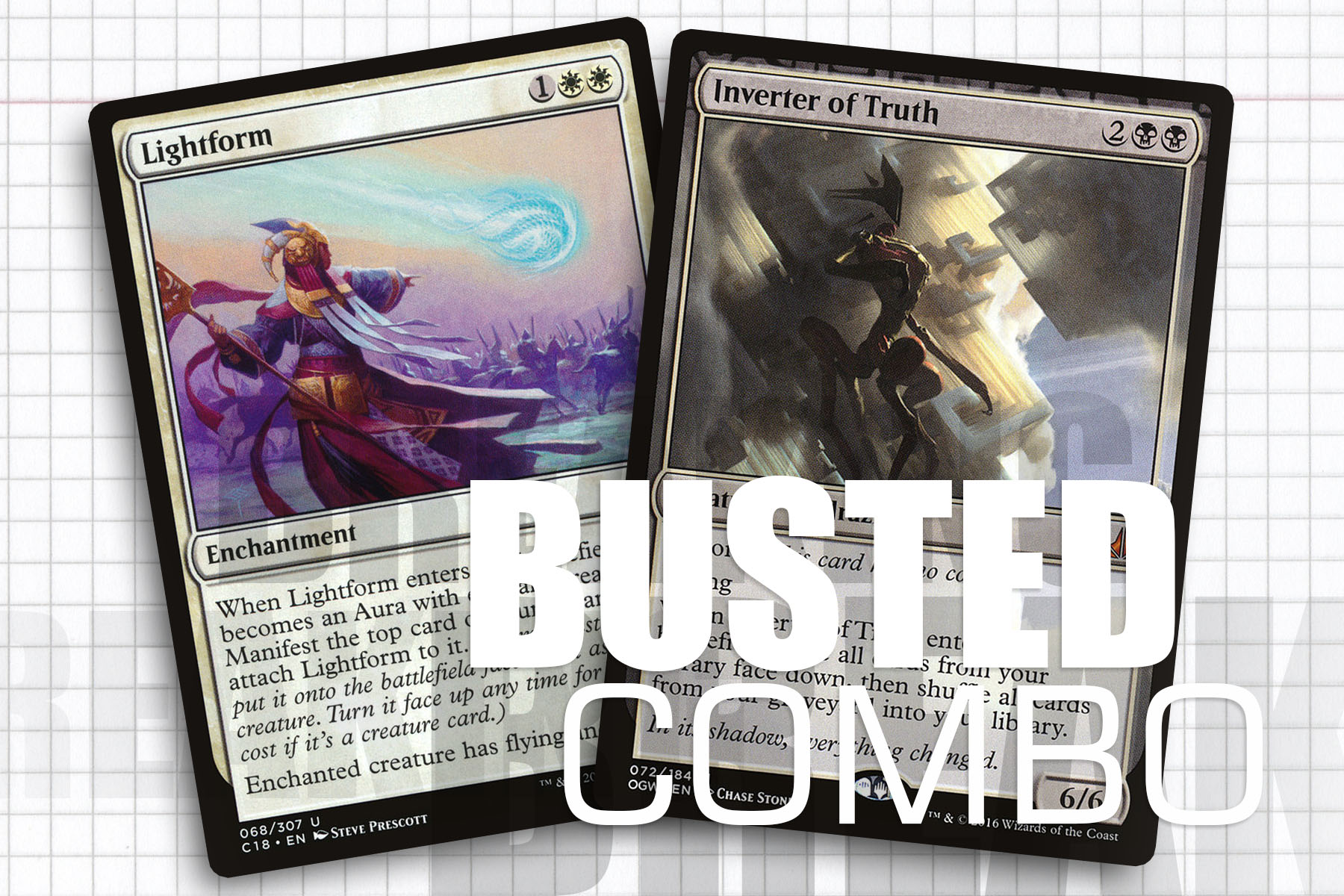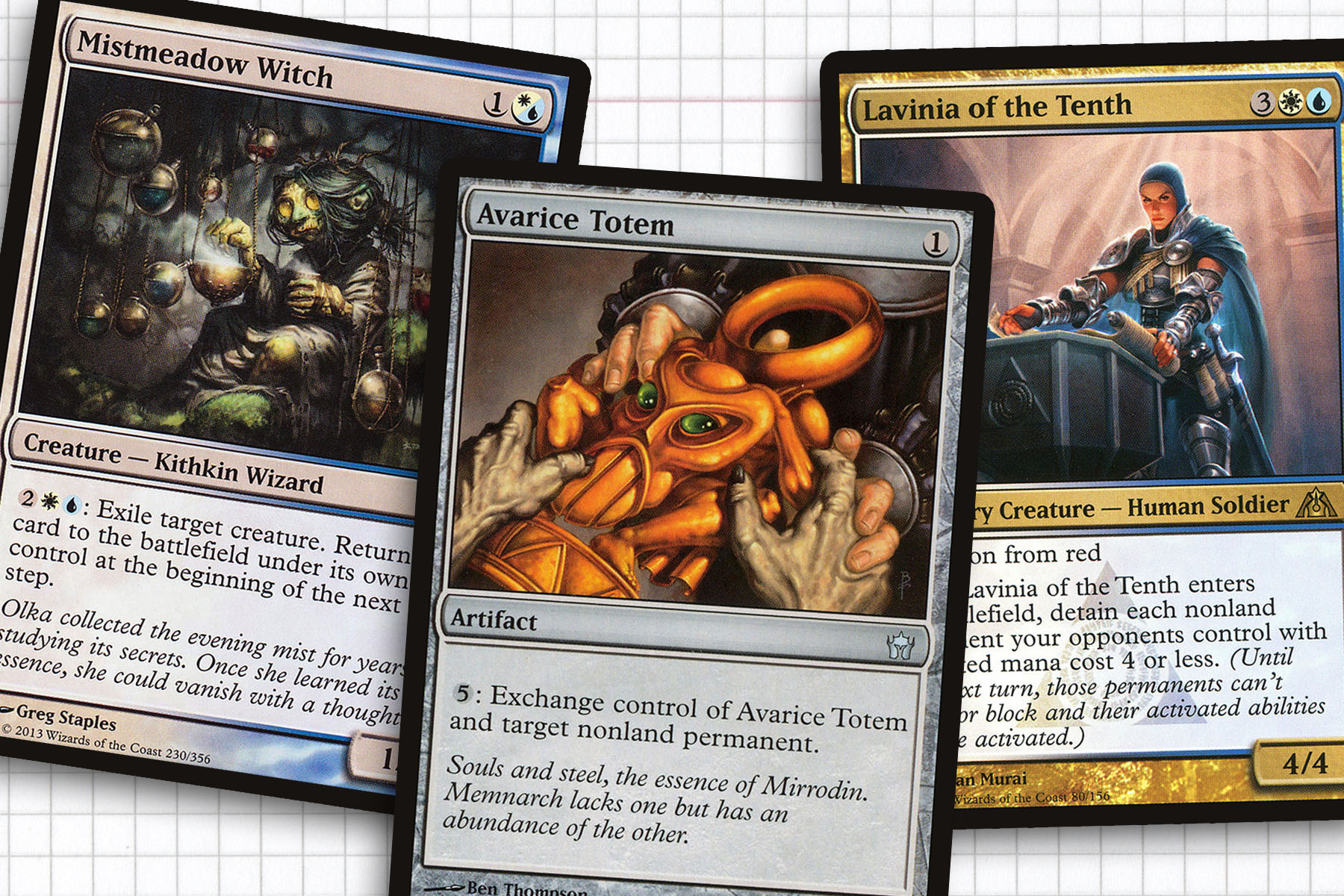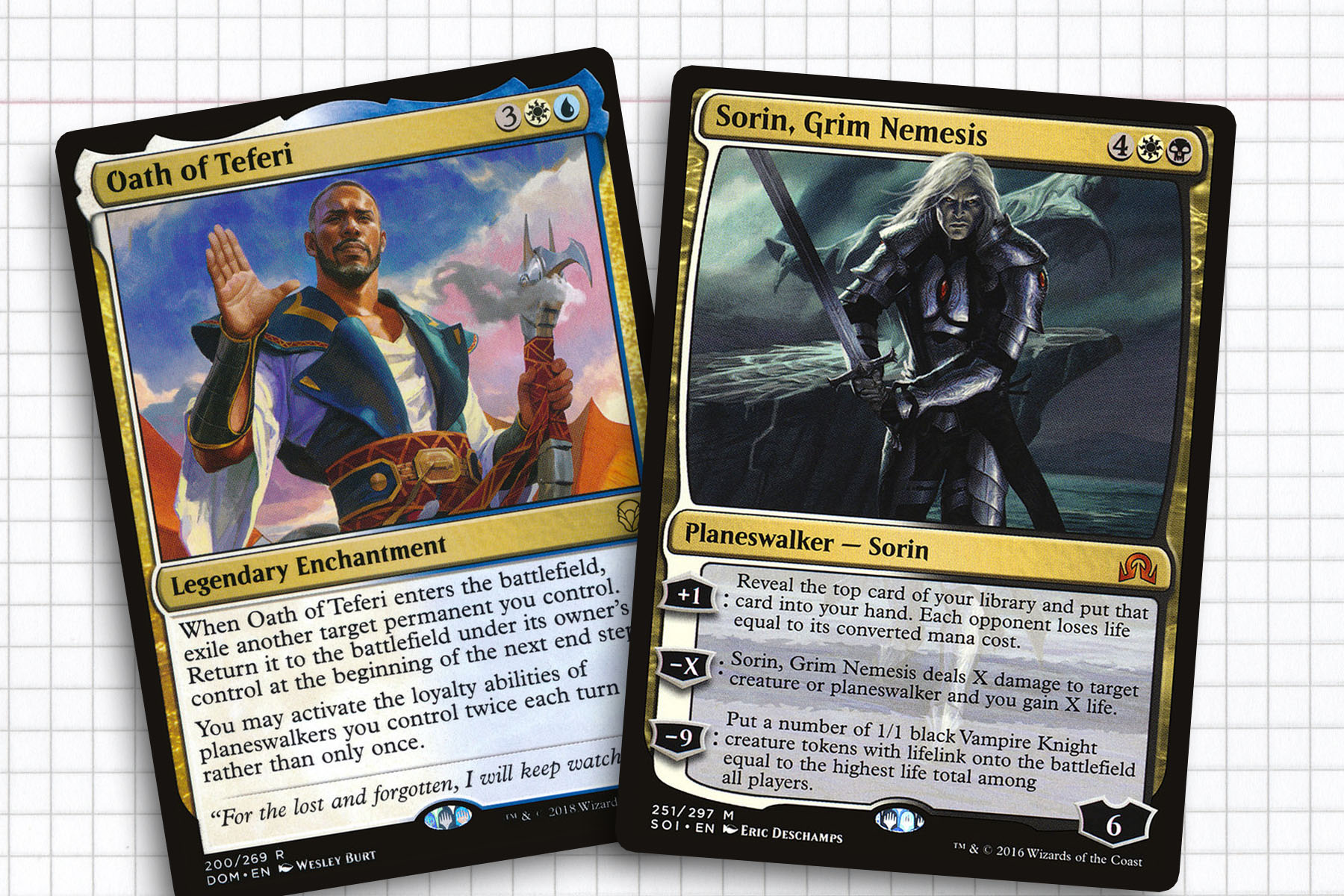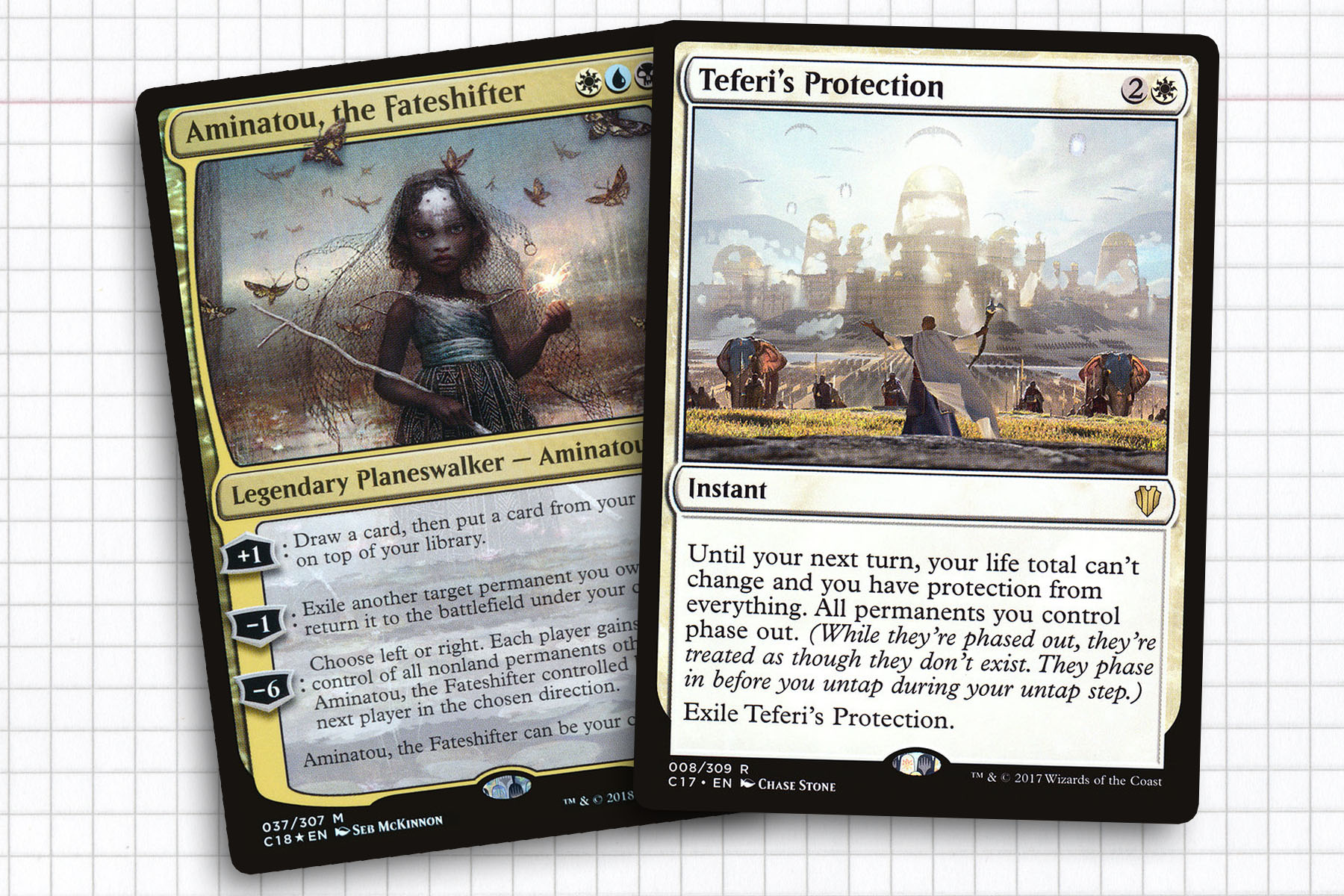I always look forward to seeing what Wizards will come up with every year with their Commander products, and last year was no different. Buzz began around the time of the typical vague announcement that we may be seeing a return of planeswalkers that could be your general. The theme was popular in 2014, and I thought that four years difference would allow Wizards to learn the lessons they needed from Commander 2014. In my opinion they did. But in the time since Commander 2018’s release and now I have admittedly had little time to give all the decks the attention I would have liked to, apart from the Subjective Reality deck, which housed today’s spotlight general, Aminatou, the Fateshifter.
Subjective Reality was a weird deck built around a weird concept that we haven’t seen distilled into a viable theme at any point in the game’s history before: top of the library matters. In hindsight, I believe that description—which doesn’t appear on the box, but came from a livestream as a way to quickly explain the broad strokes of the deck—was not entirely accurate. Aminatou in that deck plays more like an inverted Zedruu the Greathearted. But more to the point, the potential was there to make the deck manipulation theme work by substituting packages of cards out to shift focus.
Today we will be looking at what I have created thus far, it is a deck list I am currently happy with. The goal of the deck is keep the game in a state of flux until I have a reliable threat that can win me the game. Sometime that is Approach of the Second Sun threatening to be cast a second time. And other times I will steal an opponent’s best threat to win how they would have. The deck takes some thinking, but is always been a fun puzzle for me to solve as each game goes on.
I had originally wanted to see how our trip to Ravnica would play out, as I assumed some of the Orzhov, Azorius and Dimir cards might build upon what Aminatou was trying to do. But beyond Doom Whisperer – which isn’t in the currently in the deck due to my lack of hunting a copy down – I have not seen much to add to this deck as Ravnica Allegiance previews have been rolling out. So, as an impromptu tie-in with Donny Caltrider’s article on Seb McKinnon, I figured it might be a fine time to give my thoughts on how this deck plays and what I have done thus far.

Defining Fate
Starting with her first ability, Aminatou, the Fateshifter is in the rare position of caring about the top of the library. While she does not give you the ability to cast anything from there, she certainly makes it very easy to set it up. This is where the pre-constructed deck did a very good job of signaling to deck builders where this deck could go, and it is where I have chosen to go in many respects.
In my original estimate of what Aminatou would be looking to do, I spotlighted Soothsaying as one of the best cards to keep in mind. Months later, I still think of this as the strongest pick, especially for the added utility of shuffling the deck if the game demands it. To complement Soothsaying, I chose to include Unfulfilled Desires and Hedron Alignment as they have proven to be the two next best cards for ensuring we never stall because of dead draws.
The inclusion of Lightform and Cloudform along with the printing of Primordial Mist brought manifest into the spotlight. While Khans block brought a lot to the table, I see manifest as an overlooked gem that plays so well into what Aminatou can do—especially with her second ability. With the inclusion of Write into Being and Mastery of the Unseen, it should be easy to sneak oversized bodies like Inverter of Truth or Eater of Days into play and turn them face up for a low cost later while avoiding their enter the battlefield effects.
Unfortunately, miracle has not panned out as much as I would have hoped. While I see the worth in Entreat the Angels, Terminus, and Temporal Mastery; these cards often clog up either the top of my library or my hand as I wait for an optimal time to pull the trigger on them. You can stocking Brainstorm, Mishra’s Bauble, and Sensei’s Divining Top to be able to cast miracles on other players’ turns; but requires heavy mental gymnastics to keep the top of my library organized how I would like it. Also, I never liked having Future Sight in the deck—as much as I had thought I might—because it took all the secrets away and I could never bluff about what was hiding atop my library.

There and Gone Again
One of the things I liked about Aminatou from the first time I saw her was the chance to make blinking a core component of the deck. The key is, her second ability hits any permanent we own, tying into her final ability. This brought about a good tension within the deck, employing creatures that wanted to be blinked and spells that could blink them. At present the blinking package is Eerie Interlude, Long Road Home, Mistmeadow Witch, and Otherworldly Journey. The important part of these spells is that they don’t immediately return the target to play like Flicker, but instead wait until the end of turn. This plays into Aminatou’s final ability, keeping our creatures with us as we pass the turn.
On the topic of creatures, the blinking theme first brought me to the evoke creatures from Lorwyn/Morningtide: Shriekmaw, Mulldrifter, and Aethersnipe. These three presently win out over some of the other options, but spaces open up. I wouldn’t mind including others as the mechanic works well to balance the mana curve in more mana-light games. For further card advantage, I have Sphinx of Uthuun, Cryptic Annelid, and Solemn Simulacrum. And for punishing opponents or answering their threats, I have Lavinia of the Tenth, Suncleanser, and Vendilion Clique.
The use of blinking to subvert control of permanents was a obvious inclusion, but there was a time where I thought that I was going to be using cards like Legerdemain a lot more to swap permanents in greater bulk. As it turns out, Puca’s Mischief and Avarice Totem have really been all I needed, especially when I have Venser, the Sojourner in play to donate my Totem away and then blink it back to my control. This is where a lot of the fun in the deck has come from—subverting expectations that the ultimate will be my end game, when I can just pass things around the table at instant speed as the game calls for it.

Staying Loyal
Building on Commander 2014, I believe the introduction of multicolored planeswalkers generals has resulted in a stronger need for planeswalker-matter cards. With wider color identities, the door is open to take what we need from the heroic Oath of X mega cycle highlighting members of the Gatewatch. My parameters for inclusion were a good enters the battlefield effect—because we’re probably going to be able to blink them at some point—and a good secondary ability that I could see having value multiple turns in a row. This is why I don’t include Oath of Liliana: the enter the battlefield effect doesn’t do enough for me and the secondary effect is not actually going to trigger that often. But I do like Oath of Gideon, Oath of Teferi, and Oath of Jace as their effects all matter, whether they’re being blinked or just sitting on the battlefield.
The actual planeswalkers seeing inclusion was actually much harder to pin down. Right now I’m running Venser, the Sojourner, Liliana Vess, and Sorin, Grim Nemesis because of how they play with Aminatou. Not only do they focus on the top of the library or blinking somewhere in their card text, but they are great targets for blinking or gaining additional advantage from The Chain Veil and Deepglow Skate, which are included.

The Ultimate Nullifier
Aminatou’s final ability is a bit of a paradox. On the surface using the ultimate seems awesome: she paints this picture of a game state where you get to shift the entire game in your favor as everyone else around you collapses into their hands. But often, if the table let you to reach that much loyalty, what is really the purpose of swapping people’s battlefields? In my experience, once it’s clear that you could ultimate on the next turn, people tend to hold back everything because they don’t want it to disappear before they have a chance to untap.
This is where the blinking theme I discussed earlier really comes into focus. People will tend to assume you’re not going to ultimate if it means that you’re losing your best cards, and therefore play out threats that might not outweigh what I already have. By subverting those assumptions through Eerie Interlude or Teferi’s Protection, suddenly one player might be left with only lands. Unfortunately, while this sounds like a great time, in my experience I spend far more time just playing around with the top of my library and blinking my own stuff from time to time than I do worrying about the ultimate that happens in maybe 10% of games.
As time has passed, my respect for how Wizards built Aminatou, the Fateshifter has only increased. All four of the planeswalkers we got will require some time to mature. In the case of Aminatou and Subjective Reality, I believe there were kernels of really cool ideas going on. The printing of Primordial Mist and Night Incarnate brought manifest and evoke into the spotlight, and I really wish they would have elaborated on those mechanics more. Regardless, I believe I will be returning to her later in the year, as I get a better sense of her place in the format and we see what the untitled third Ravnica set it. Until next time, thank you.
Ryan Sainio is a Graphic Designer who writes about EDH, the EDH community, and streams on Twitch in his down time. He has been playing Magic: The Gathering since 7th Edition in 2002 and values flavorful and fun gameplay over competitively optimized decks. Join him for a stream at twitch.tv/hipstersainio on Tuesday nights.

